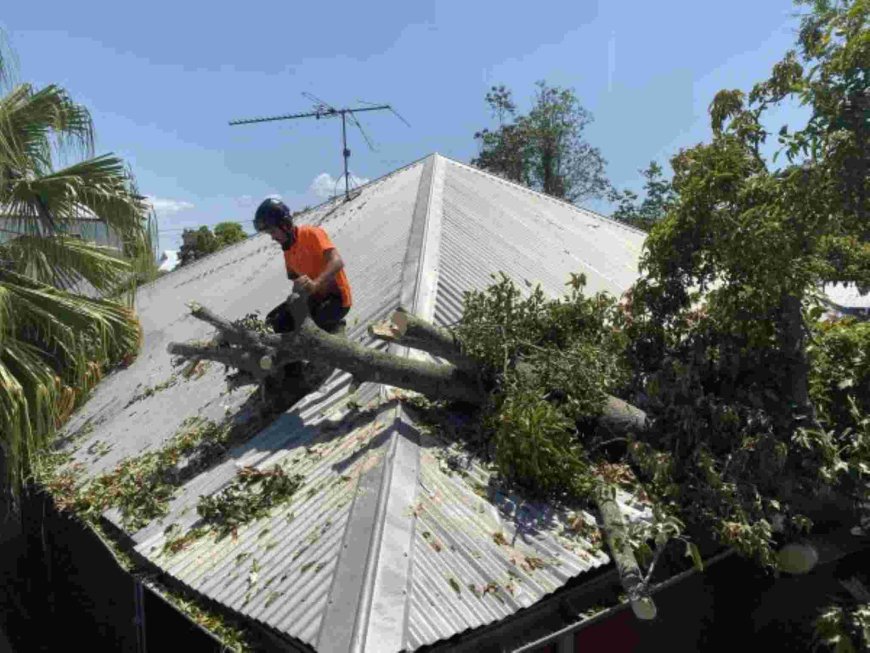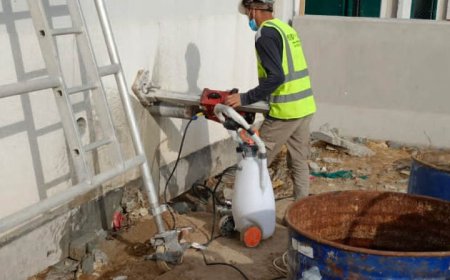Complete Guide to Tree Removal: What You Need to Know
Tree removal isn’t something you want to take lightly. Whether the tree is dead, dangerous, or simply in the way, the process requires planning, skill, and the right crew. Choosing a trusted professional ensures safety, efficiency, and peace of mind. When it comes to trees—don’t guess, assess.

Tree removal is the process of safely cutting down and eliminating a tree from your property. Whether due to safety concerns, disease, or landscaping changes, removing a tree isnt as simple as grabbing a sawits a technical process that often requires professionals and proper equipment.
Why Tree Removal is Sometimes Necessary
Not all trees are meant to stay. Some become dangerous, others outgrow their space, and many simply die. Removing them at the right time helps prevent property damage, injury, and pest infestations.
Common Reasons for Tree Removal
Dead or Dying Trees
If a tree is no longer alive, it becomes brittle and unpredictable. Dead branches can fall at any time, and the entire tree may collapse during high winds.
Trees Damaging Property
Tree roots can crack foundations, invade plumbing lines, or buckle sidewalks. Overgrown canopies might interfere with power lines or block sunlight from reaching your lawn.
Hazardous Trees After Storms
Storms often leave trees split, leaning, or uprooted. These unstable trees pose serious risks and should be removed as soon as possible.
Landscape Renovation or Construction
Sometimes a tree simply stands in the way of progresswhether you're building a pool, expanding your driveway, or redesigning your yard.
Tree Removal Process
Site Assessment and Planning
Every removal starts with evaluating the trees health, location, and surroundings. Professionals plan the direction of the fall, the equipment needed, and any safety hazards nearby.
Tools and Equipment Used
Expect to see chainsaws, cranes, bucket trucks, climbing ropes, wedges, and chippers. For large or tricky trees, advanced gear like rigging systems and aerial lifts is a must.
Cutting and Disposal
Once everythings set, the tree is methodically cutstarting with branches and working down the trunk. The debris is then either hauled away, chipped on-site, or left for firewood.
DIY Tree Removal vs Hiring Professionals
Risks of DIY Tree Removal
Unless its a very small tree in open space, DIY is dangerous. Falling limbs, equipment mishandling, and improper cutting angles can result in severe injury or property damage.
Benefits of Hiring Experts
Professionals come with training, insurance, and equipment. They also know how to handle unexpected challenges like bee nests, rot, or tree lean direction changes.
Safety Measures in Tree Removal
Protective Gear
Helmets, goggles, gloves, ear protection, steel-toed boots, and harnesses are basic requirements for anyone near a tree removal site.
Ground and Aerial Safety Protocols
From ground crew positioning to rope control for falling limbs, professionals follow strict protocols to keep people and property safe.
Cost of Tree Removal
Factors That Affect Pricing
-
Tree size and height
-
Tree type (hardwood vs softwood)
-
Proximity to buildings or power lines
-
Accessibility and terrain
-
Emergency or after-hours work
Average Costs by Tree Size
-
Small tree (under 30 ft): $150$400
-
Medium tree (3060 ft): $400$900
-
Large tree (60+ ft): $900$2,000+
Getting an Accurate Estimate
Always request a free on-site estimate. Reputable companies wont quote over the phone without seeing the tree first.
Aftercare and Cleanup
Stump Removal Options
You can choose to:
-
Leave the stump (least expensive)
-
Grind it down (popular option)
-
Fully excavate (removes roots, best for replanting)
Mulching and Wood Recycling
Ask if the wood can be chipped and left for mulch, or if the company hauls it for recycling.
Replanting or Landscaping Ideas
Tree removal creates new spaceconsider planting native shrubs, installing a garden bed, or adding a patio.
Choosing the Right Tree Removal Service
What to Look for in a Company
-
Proper licensing and insurance
-
Certified arborists on staff
-
Modern equipment and safety certifications
-
Transparent pricing
Questions to Ask Before Hiring
-
Can you provide proof of insurance?
-
How will you protect my property?
-
Whats included in your quote?
-
Do you handle permits?
Warning Signs of Unreliable Contractors
-
No physical address or business license
-
Refusal to provide insurance documentation
-
High-pressure sales tactics or unusually low pricing
Environmental Considerations
Local Tree Protection Laws
Check with your local municipalitysome areas require permits or prohibit the removal of protected species.
Responsible Tree Removal Practices
Eco-conscious companies reduce waste, replant when necessary, and avoid harming surrounding vegetation or wildlife.
Conclusion
Tree removal isnt something you want to take lightly. Whether the tree is dead, dangerous, or simply in the way, the process requires planning, skill, and the right crew. Choosing a trusted professional ensures safety, efficiency, and peace of mind. When it comes to treesdont guess, assess.
FAQs
Can I remove a tree without a permit?
It depends on your local regulations. Many cities require permits, especially for large or native species.
What time of year is best for tree removal?
Late fall or winter is ideal, as trees are dormant and theres less foliage to manage.
Will tree roots keep growing after removal?
Most roots die after the tree is cut, but aggressive species might regrow if not properly addressed.
Can I sell the wood from my removed tree?
Yes, depending on the tree species. Hardwood like oak or walnut may have value.
How long does the process take?
A single tree can be removed in a few hours, but complex jobs may take a full day or more.








































